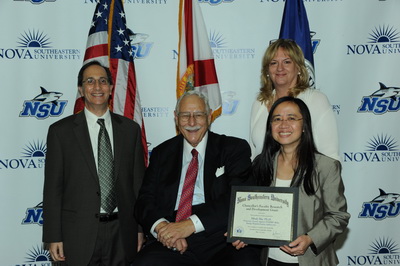Protective Factors Against STD/HIV Risks Among Hispanic/Latino Adolescents
Grant Winners
- Mindy Ma, PhD – Farquhar College of Arts and Sciences
- Jeffrey Kibler, PhD – Center for Psychological Studies
- Vera Lopez – Farquhar College of Arts and Sciences
- Andrea Bernal – Farquhar College of Arts and Sciences
Deans
- Don Rosenblum Ph.D. – Farquhar College of Arts and Sciences
- Karen Grosby, M.Ed. – Center for Psychological Studies
Abstract

Hispanic/Latino adolescents are disproportionately impacted by STDs and HIV. The literature suggests cultural variables may contribute to the STD/HIV epidemic within the Hispanic/Latino communities. Most research on predictors of HIV transmission focuses on negative sexual risk factors. There is a relative lack of research on protective factors against STD/HIV risk among Hispanic/Latino adolescents. The objective of the present study is to examine the associations between positive character strengths/assets and sexual risk attitudes/behaviors among Hispanic/Latino adolescents.
Participants will be 250 Hispanic/Latino adolescents (50% male), ages 12-17, recruited from community partners that serve adolescents in Broward and Dade County (e.g., Hispanic Unity, Boys and Girls Club). Participants will complete a 100-item questionnaire consisting of youth assets and sexual attitudes/behaviors. The predictors assessed will include familisimo, cultural pride, simpatia, espiritismo, personalismo, love of learning, curiosity, prudence, and leadership. The outcome variables are sexual intimacy (touching or kissing in a sexual way), sexual intercourse, age of sexual initiation, lifetime sexual partners, condom use, belief in premarital sex, sexual initiation self-efficacy, and condom use self-efficacy. The literature suggests that the youth assets are inter-correlated. Because of the anticipated inter-correlation among predictors, stepwise discriminant function analyses will be utilized to assess their independent associations with sexual attitudes and behaviors.
If the data indicate that youth character strengths/assets are associated with lower STD/HIV risks among Hispanic/Latino adolescents, these protective factors can be included in the existing problem-centered programs that are aimed to reduce sexual risk behaviors for adolescents.